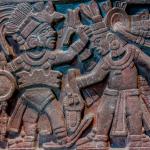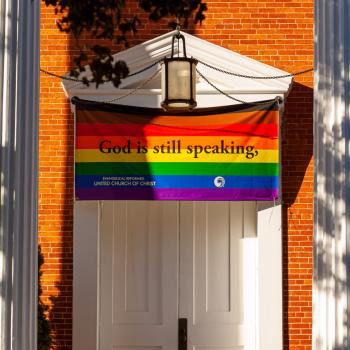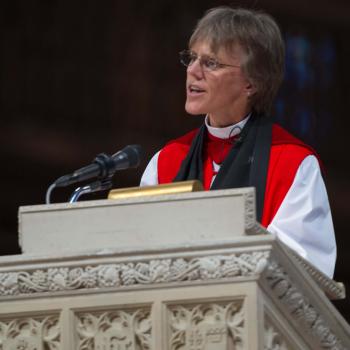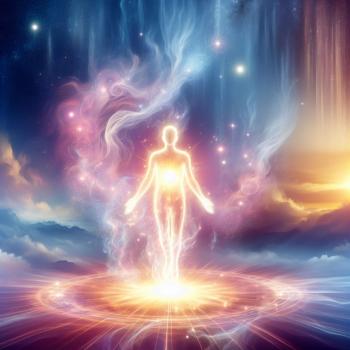Recently, Cameron Hilditch wrote an article in National Review highlighting the work of Christoper Rufo. Rufo’s research into the teaching of “decolonization” in our nation’s classrooms is illuminating. In particular, Rufo has documented a direct attack against Christianity taking place in California grade schools. There seems to be an intentional effort to reeducate children away from anything associated with Jewish or Christian values. This pedagogical shift disparages the classical canon of Western literature and thought, as well as the Christian theological tradition that informs much of that canon.
The Western Foundations for Law and Governance
This attack is nothing new, of course, even if it has taken an aggressive turn. As an alternative to the Judeo-Christian worldview which has provided the foundation for the entire edifice of Government and Law in our country, elementary schools are now promoting ancient, pre-Christian forms of religion as a possible basis. In this specific case in California, administrators are endorsing polytheistic and animistic beliefs of the pre-Colonial and pre-missionary Aztec empire. This empire was not necessarily known for its cultural tolerance, its halcyon spirit, or its gods of “love and forgiveness” (see 1 John 4:8 & John 3:16).
Nevertheless, this should not surprise us. In my previous post, I looked at the work of one critical race scholar, Kenneth B. Nunn. I argued that Nunn’s 1997 article “Law as a Eurocentric Enterprise” makes conceptual space for a real transformation in the pre-political basis for human law and governance. This move further opens the door for a literal return to the old gods and the accompanying religious practices of polytheistic systems.
If we accept that man is a religious creature first and foremost, homo religiosus, as thinkers as diverse as Hegel, Kierkegaard, James, Chesterton, Jaspers, Fromm, Maslow, and Gilkey did (see DuBose T. (2014) Homo Religiosus at https://doi.org/10.1007/978-1-4614-6086-2_308), then we need not be shocked about this shift. Christians especially should expect such cultural movements and the reemergence of other spiritualities and religions. However, as I pointed out last time, in undermining the rational substructure that supports not only our current legal system, but also the theological systems of traditional Christianity (Roman Catholic, Orthodox, and Protestant), Nunn and other critical race scholars, whether directly or indirectly, pave the way for a different kind of society to emerge. This society might be new in one sense but quite ancient in another.
Critical Race Theory’s Rejection of Modernity
Critical Race theorists like Nunn reject much of what is usually called “Modernity” in philosophical and social-historical circles. Modernity is hallmarked by some key features. First, a theory of history as progressing. Second is a sense of man’s innate capacity of reason (the “natural light of Reason”) as the tool by which to actualize such progress. And third is the idea of man’s own innate moral goodness, or at least his capacity to make himself and society more moral. Another unfortunate aspect of Modernism that some critical race theorists rightly criticize is the modernist attempt to “desacralize” nature. This “desacralization” makes nature out to be little more than an object for man’s manipulative uses.
This is, in part, a caricature of modernism. Nevertheless, the critique is partially valid. From a traditional Christian worldview, there are significant features of Modernism that are real problems. However, where Nunn goes much further than most are willing, is in his connecting certain cognitive features, i.e., mental attributes, which he thinks are uniquely fundamental to European culture, with the sheer will to power.
For Nunn, cognitive attributes like: dichotomous reasoning, objectification, abstraction, employment of hierarchies, etc., are one of the two sources of the evil of racism and oppression (Nunn, “Law as a Eurocentric Enterprise” 334-337). Because Europeans exemplify these mental attributes in an overlapping “matrix,” (Nunn, 338) i.e., in ways that other non-white, non-European cultures do not, to be European or of European pedigree is to be born into this matrix of attributes. And, consequently, to be born into these attributes is to be born into racism.
The Innate Moral Corruption of Europeans
It is not just these cognitive attributes that are the problem. European cultures are also innately immoral. This is the second source of racism. Nunn asserts the following about the moral nature of European cultures:
Western European culture is highly materialistic, competitive, individualistic, narcissistic and places great emphasis on the consumption of natural resources and material goods. In addition, European culture tends to take aggressive, domineering stances toward world inhabitants. Consequently, the driving force behind racism, colonialism and group-based oppression is European and European-derived culture.
Nunn, 325-326
According to Nunn, it is not universally the case that human beings are materialistic, competitive, aggressive, domineering, etc. It is Europeans who are this way and that in contrast to non-European cultures. Apparently, as non-European, the Aztecs would be exempt from these charges of aggression and oppression. So would Japan under the 17th-century shogunate of Tokagawu Leyasu, the Zulu Kingdom under Shaka, or Turkey under the Ottomans be free from the stain of such moral defect. Moreover, these moral deficiencies are not merely contingent. It is not as if Europe could have gone in a different moral direction but just happened to latch on to the ideas of a few immoral men:
From an African-centered cultural perspective, racism, sexism, classism and other problems endemic in Western societies are not the product of misguided or venal individuals. Nor are they solely the result of material conditions or predictable social processes. These problems result from the fundamental nature of European society and culture. That is, racism, sexism, etc., flow from the world-view and conceptual system that is at the core of European culture.
Nunn, 330-331 [emphasis added].
In sum, it is not that there were just a handful of brilliant but bad Europeans who had some immoral ideas that took root in culture and lead Europeans in a depraved direction. Nor is it just historical or social conditions or processes, i.e., the refinement of certain technologies in the hands of the irresponsible and the wicked, that caused European depravity. No. Rather, it is the “fundamental nature” of European society and culture that seems to be the source of moral evil. From where this nature comes or how it developed, Nunn never directly addresses. It is enough to know that European nature, unlike the nature of non-European societies, is the source of the immoralities and evils of the modern world.
CRT’s Dual Criticism Of Eurocentricity: Original Sin and the Bible
One might agree that there is a recognizable source of this fundamental European moral nature, or at least a dual source of it. Regarding those moral features which almost everyone would agree are actual moral defects, e.g.,: aggression, narcissism, and materialism, most Christians would contend that all of these are universal traits. It just isn’t true that they come together in a special way in Europeans. It is sin that causes these moral flaws, and sin is universal to all cultures. This is due to all cultures being a product of one man and one woman and in a state of rebellion against God. This just is the doctrine of original sin, and, to some Christians’ dismay, the doctrine of original guilt. Thus, all men and women, not just Europeans, require a savior not made in our image, but who took on our image in order that we might be restored (see Romans 5:12-21) to goodness, to beauty and to life. CRT’s failure here is claiming that original sin is original only to one particular culture.
Second, however, regarding those characteristics that seem morally neutral, e.g. individualism and, although not directly stated, the implied patriarchy, the source for these moral attitudes that Nunn criticizes can only be the Bible and the Christian tradition. However, one of these is clearly shared with all other cultures (patriarchal headship), while the other bespeaks real moral progress (the emphasis on the individual).
The biblical doctrine of the Imago Dei and its theological development over the Church’s history, has acted as a cornerstone in the building of morally just systems of governance and jurisprudence, both in the West and globally. This is the case even if those systems historically have failed to live up to the principles upon which they were constructed. Nunn’s attack and the attack of other critical race theorists is a two-pronged one. It has two sources of moral iniquity in view: one is original sin itself, the other is the Bible. However, the universality of the first is rejected, while at the same time the solution to the sin problem offered by the second is equally dismissed. The end result is a particular sin problem, one located exclusively within a particular culture, yet without any means to solve that particular problem, i.e., no mechanism for expiation and atonement.
Critical Race Theory and the Return of the Old Gods
If the goal of critical race scholars like Nunn is to deconstruct the edifice of American law and governance by calling into question various cognitive capacities that are typical of European culture, as well as the moral nature of European culture itself, then what is the new foundation upon which a society could be built if they succeed? What might act as the pre-political and pre-legal basis for a new legal system and a new form of governance? There are two contrasting options it would seem: the first would be to cut something new from whole cloth. The second would be simpler: a complete return to a pre-Colonial and perhaps pre-Christian metaphysical and moral basis, i.e., to ancient religious forms or practices upon which a new legal system could be built. A third option could be some kind of synthesis of the current with the old.
It is questionable whether human beings ever create anything entirely new. It is also unlikely that there will be a statistically significant return to the direct and explicit worship of Huitzilopochtli, the Aztec God of war. However, as Rufo illustrates, it does seem that a synthesis is being tried. The synthesis, however, is not between the Judeo-Christian, Enlightenment culture of Europe with the ancient gods of Mexico. At face value such a synthesis appears impossible anyway. Instead, there is evidence that a synthesis between Marxism and ancient polytheism is being tried (even if it too is rather incoherent):
This religious concept is fleshed out in the model curriculum’s official “ethnic studies community chant.” The curriculum recommends that teachers lead their students in a series of indigenous songs, chants, and affirmations, including the “In Lak Ech Affirmation,” which appeals directly to the Aztec gods. Students first clap and chant to the god Tezkatlipoka—whom the Aztecs traditionally worshiped with human sacrifice and cannibalism—asking him for the power to be “warriors” for “social justice.” Next, the students chant to the gods Quetzalcoatl, Huitzilopochtli, and Xipe Totek, seeking “healing epistemologies” and “a revolutionary spirit.”
Huitzilopochtli, in particular, is the Aztec deity of war and inspired hundreds of thousands of human sacrifices during Aztec rule. Finally, the chant comes to a climax with a request for “liberation, transformation, [and] decolonization,” after which students shout “Panche beh! Panche beh!” in pursuit of ultimate “critical consciousness.” The chants have a clear implication: the displacement of the Christian god, which is said to be an extension of white supremacist oppression, and the restoration of the indigenous gods to their rightful place in the social justice cosmology. It is, in a philosophical sense, a revenge of the gods.
Christopher Rufo, “Revenge of the Gods”
Marxist Polytheism?
A strange mix of Marxism and Aztec religion does not seem conducive to a healthy and flourishing society. Historically speaking it is hard to imagine two more brutal societies, both drenched in the literal blood of millions upon millions. Moreover, theoretically speaking, this strange mix also seems to assume that reason and philosophy cannot adjudicate over any substantive conflicts between competing religious traditions and their customary laws. There is an embrace of the irrational here, or, at least, the a-rational.
Even the hopeful rationality of someone like Karl Jaspers, who saw philosophy as the means by which we might gain insight into the “essential situation of human beings” so as to “overcome the will to destruction through a will to communication” (Jürgen Habermas, “The Conflict of Beliefs” in The Liberating Power of Symbols, 31) seems impossible. After all, if we view dichotomous thinking or abstraction as nothing more than “tools for control” (Nunn, 336) in the hands of an inherently evil culture, where does that leave rational communication? If, like Tertullian, one is compelled to question what Jerusalem hath to do with Athens, one should actively resist even the possibility of Moscow having anything to do with Tenochtitlan!
Conclusion: Eurocentricity is Not The Problem, Sin is and the Bible Does Have the Answer
America and European cultures, like all cultures, are deeply flawed due to the universal attribute of sin. However, taking even the ugliness of slavery and the subjugation of native Americans into account, the values and principles of American and European culture have not done a disservice to the world. Most importantly, the greatest service ever done in the world was rendered when Roman Catholic and Protestant missionaries brought the Gospel to those children of God who still walked in spiritual darkness. That that cosmic mission occurred through Europeans was certainly a contingent event. Had it not been for the Mongols and the Islamic Caliphates of the 12th and 13th century, the great missionary endeavor would have occurred in the East and not the West (see Phillip Jenkins book The Lost History of Christianity).
Scholars like Kenneth Nunn and CRT popularizers like Ibrahim Kendi and Robin DiAngelo, should be careful not to make a massive genetic fallacy in their fervor to dismiss of all things European or all things Christian ( which seems to be their real target anyway). That said, if one truly desires a “return to the old gods,” then I wonder which one of these high priests of CRT will be the first to take up the sacrificial knife in one hand and the sacrificial child in the other?














